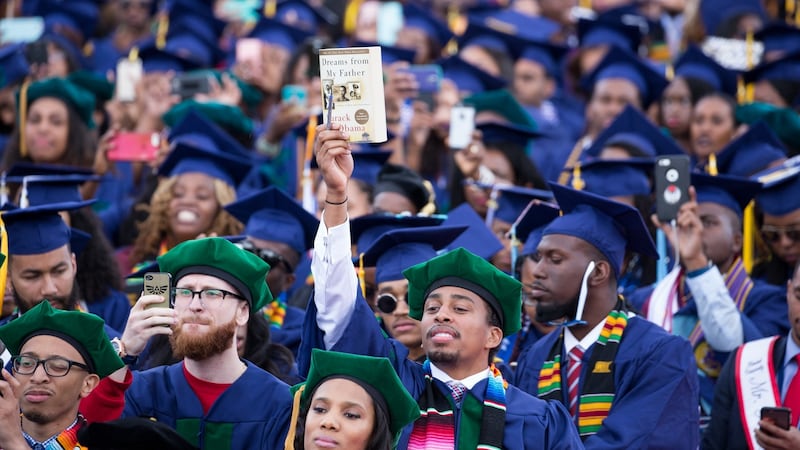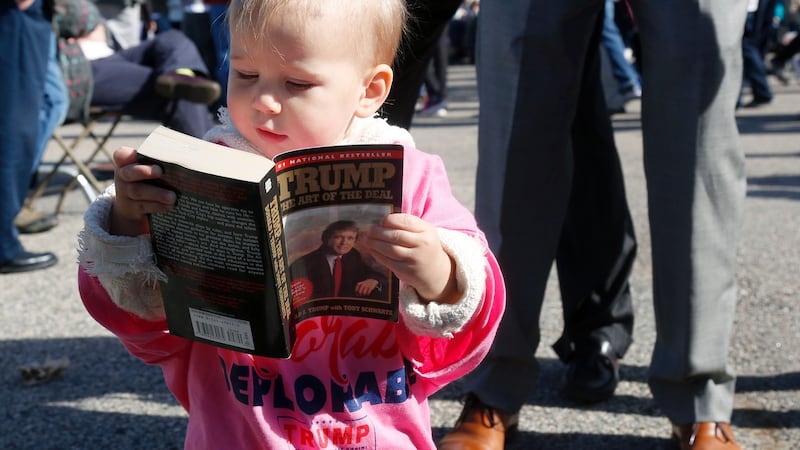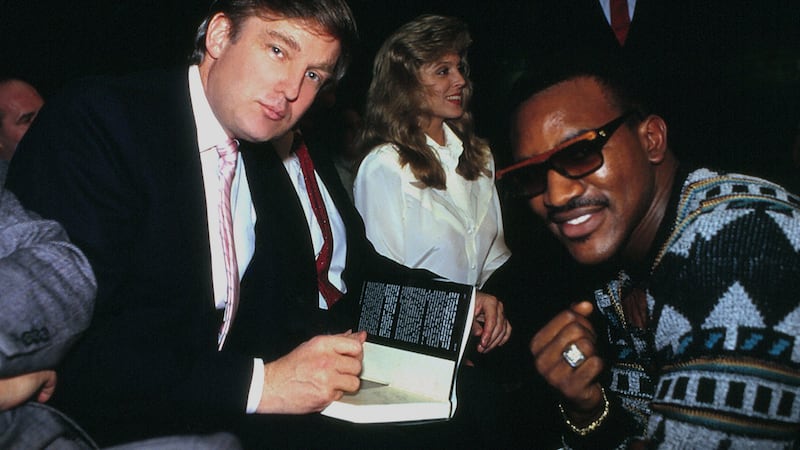Amidst the barrage of tweets and breaking news, it can be useful to step back and wonder how we got here. Specifically, how did Barack Obama and Donald Trump, these two most unlikely presidential candidates, manage to prevail against the Clintons and the Bushes, the ruling dynasties of their time?
Through literature. Obama and Trump came to wider public attention with successful books in which they crafted the personal narratives that took them all the way to the White House.
The roots of his success as a TV personality were laid with The Art of the Deal. Thanks to his book, Trump was becoming something entirely different: a celebrity
To be sure, other nations have their literary leaders as well. Nineteenth-century Britain had Benjamin Disraeli, who had made his name as a novelist, the dominant genre at the time. (Worried about becoming prime minister, he was told by his aides: “don’t worry, they’ll give you the numbers.”) Post-Cold War Czechoslovakia had Vaclav Havel, the acclaimed author of Dramas of the Absurd, the literary style most appropriate to life in the Soviet Union. The only statesman to receive the Nobel Prize in Literature was Winston Churchill, for his “mastery of historical and biographical description”. Boris Johnson hoped to tap into this literary source of power with The Churchill Factor. Saddam Hussein re-wrote The Epic of Gilgamesh.
Each country gets the literary presidents it deserves, based on its literary traditions. With Presidents 44 and 45, we got two practitioners of autobiography, a genre deeply woven into our national history.

Dreams from My Father, published in 1995, was written by a recent law school graduate and community organiser, whose editorship of the Harvard Law Review had garnered him a contract for a book about race relations. It soon became something very different: a story about immigration. Subtitled A Story of Race and Inheritance and presented as a memoir, the book undertook a deeply searching rumination on Obama’s black and white ancestry, beginning with the sudden death of his father in a car crash. Turning a personal story into a political one, Obama drew on The Autobiography of Benjamin Franklin, in which Franklin had followed his family back to England, but then proceeded to translate that inheritance into the story of himself as an exemplary American.
There are few people who think of Donald Trump as a notable writer, aside from his tweets. The medium responsible for his rise was reality TV, above all the five seasons of The Apprentice, which Trump parlayed into a series of appearances at the lower end of the television spectrum, including World Wrestling Entertainment events.

And yet, the roots of his success as a TV personality were laid with The Art of the Deal. Published in 1987, the book’s success came at a fortunate moment for its author, when his real estate deals started to fail, threatening his finances and his professional future. Soon, this didn’t matter because, thanks to his book, Trump was becoming something entirely different: a celebrity. His long-running dispute with Forbes’s wealth ranking – Trump claims to be worth roughly twice the Forbes estimate – is primarily about the value of his name.
At first blush, Art of the Deal looks very different from Obama’s searching rumination. Co-written with Tony Schwartz, the book established Trump as the brash dealmaker, a figure he then translated into reality TV. But Trump (and Schwartz) crafted this story in ways that are closer to Obama’s than we might want to admit. Like Obama, Trump explores his ancestry, though he deliberately falsifies it, claiming Swedish ancestry when in fact it is German (making him the second German-American president, after Eisenhower).
The main purpose of Art of the Deal is not to dwell on the past, but to celebrate Trump’s success in business. The business success story derives from the same root as the immigration memoir, namely Benjamin Franklin, who spends his autobiography giving advice on how to make it in America. The Franklin business story came to Trump (and Schwartz) via Dale Carnegie’s How to Win Friends and Influence People, of 1936 (Carnegie frequently quotes Franklin as a model). The point of the genre is to present its protagonist as someone to be emulated, which Art of the Deal does generously – “a commonsense guide to personal finance” the inside copy promises, and chapter titles such as “maximize your options” and “know the market” offer advice on every page.

But Trump departed from the How to model significantly when, early in the Art of the Deal, he questions whether anyone could possibly imitate him. He comes to the startling conclusion there is no art of making deals to be learned after all. What Trump possess and describes is an instinct you must be born with. Almost gleefully, Trump violates the rules of the genre by selling lessons that will not be of use to anyone. He wins, and the reader loses.
The two books played a surprisingly large role in their author’s careers, which raises the question of why these otherwise so radically different presidents were both made by literature. One answer is that these days, in America, if you don’t have the backing of a powerful family clan, you better have something else. That something else is a good story, which is where autobiography comes to your aid. It is, after all, the genre of creating a self through literature. Obama and Trump are case studies in the shaping power of literature, even in an age of reality TV and Twitter.
Literary traditions are stories that are repeated over and over again, providing entire cultures with fundamental ways of understanding the world. Autobiography, whether as memoir or as self-help book, exists in other cultures, but it is nowhere as dominant as in the United States. Its formulas are baked into the national story, from the literary canon to the college application essay. Since autobiographies tell the stories of individuals, they dovetail with individualism and the belief in the exemplary life; with their nods to ancestry (actual or made-up), they tell tales of immigration and becoming American; as public acts of self-fashioning, they create characters ready to enter political life.
Sometimes, they even create presidents.
- The Written World: How Literature Shaped History by Martin Puchner is published by Granta Books











